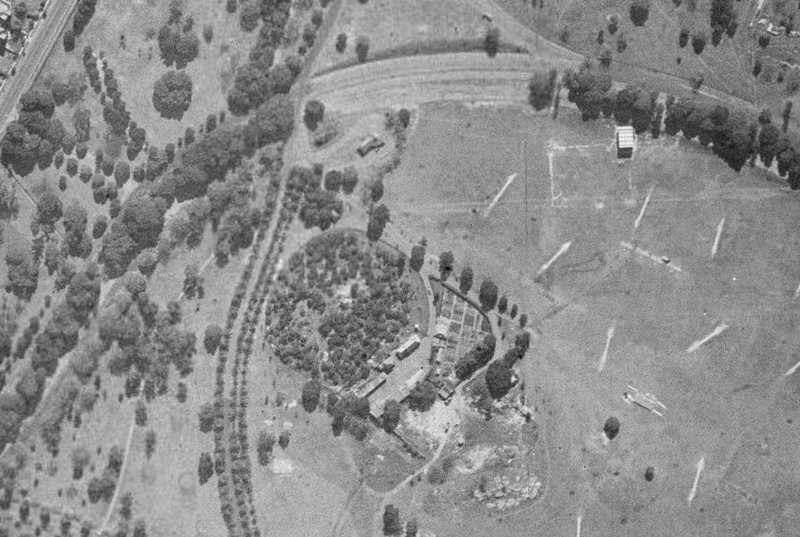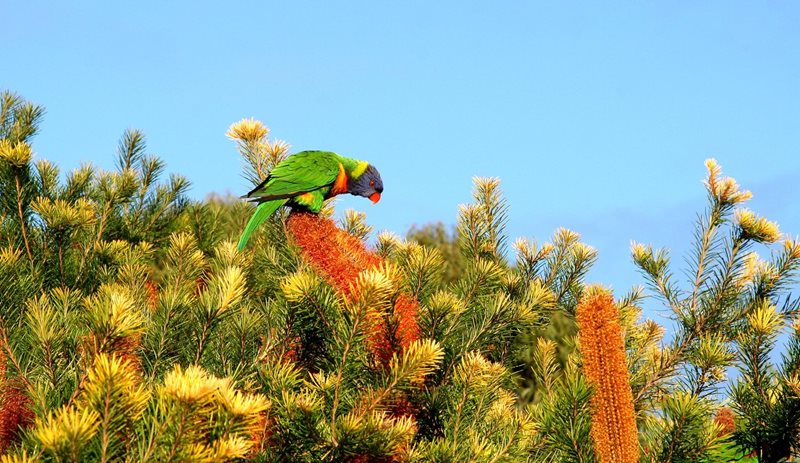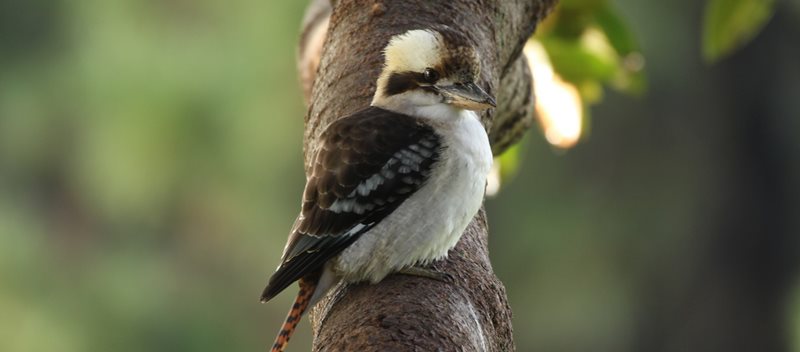The Gate in Centennial Park
The Brolga Gate in Centennial Park was designed in 1939 by Jack Castle-Harris, well-known in pottery, ceramics and the arts at the time.
Originally located in the Lachlan Reserve area (where exactly is a little unclear!), however in 1953 it was moved to its present location near Centennial Homestead.
The Brolga Gate was assessed as High Heritage Significance and the original endemic plant species within the sanctuary also contribute to Centennial Parklands historical significance.
 An aerial photograph of the Bird Sanctuary circa 1943.
An aerial photograph of the Bird Sanctuary circa 1943.
Bushcare
The Bird Sanctuary is roughly 0.9 ha in size and although it isn't open to the public, the Bushcare Program has a dedicated group of volunteers that have been tending to the sanctuary for over 15 years.
The Bird Sanctuary also helps to conserve the critically endangered Eastern Suburbs Banksia Scrub (ESBS).
There is an abundance of vegetation for the birds to nest and feast on including closed-scrub to tall open-shrubland throughout much of the site.
Tall shrubs which make up the bulk of the upper vegetation include the Sydney Golden Wattle (Acacia longifolia), Tick Bush (Kunzea ambigua) and Tree Broom Heath (Monotoca elliptica).
Other ESBS species are Wallum Banksia (Banksia aemula), Mountain Devil (Lambertia formosa) and Coastal Tea Tree (Leptospermum laevigatum).
 A Rainbow Lorikeet enjoying the Banksia within the Bird Sanctuary at Centennial Parklands.
A Rainbow Lorikeet enjoying the Banksia within the Bird Sanctuary at Centennial Parklands.
What types of birds can be found inside?
Native birds, including the Powerful Owl, have been recorded in the Bird Sanctuary. The bush remnant also provides habitat for brushtail possums, blue-tongue lizards and skinks, and Grey-headed Flying-foxes.
Other birds that are often seen in the sanctuary include the Australasian Magpie, Australian White Ibis, Crested pigeon, Grey Butcherbird, Laughing Kookaburra, Noisy Friarbird, Noisy Miner, Pied Currawong, Rainbow Lorikeet, Welcome Swallow and Yellow-tailed black cockatoos.
 Baby Kookaburras are kept safe in the Bird Sanctuary.
Baby Kookaburras are kept safe in the Bird Sanctuary.
Care for our green spaces
Centennial Parklands is one of Australia's largest and most popular public spaces, hosting more than 31 million visits every year.
People aren't the only ones who visit so we encourage everyone to Share the Park with the animals and wildlife who rest, nest, eat and live in the Parklands.
Whether you visit as cyclist, pedestrian, dog walker, horse rider or a motorist, you can do some things to help us Share the Park:
Find out how you can get involved with Share the Park here.